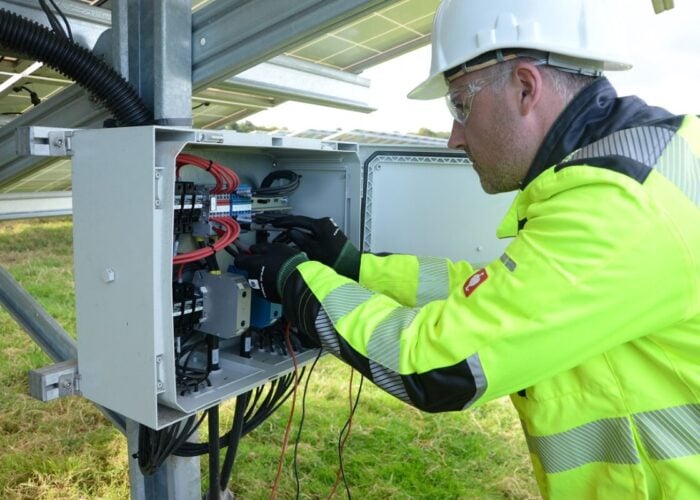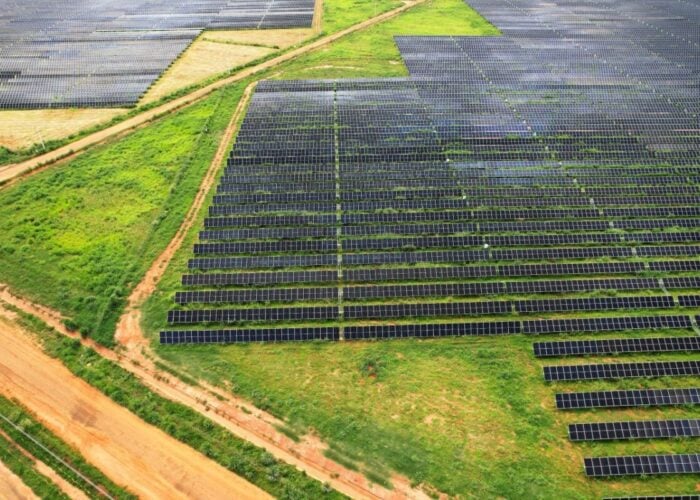
India’s Goods and Services Tax (GST) Council, the joint forum of the Centre and States, has reduced the GST rate on renewable energy components from 12% to 5%.
Taking effect from 22 September, 2025, the components include solar power equipment, solar cookers and lamps, windmills and generators, waste-to-energy systems, biogas plants and tidal or wave energy installations.
Try Premium for just $1
- Full premium access for the first month at only $1
- Converts to an annual rate after 30 days unless cancelled
- Cancel anytime during the trial period
Premium Benefits
- Expert industry analysis and interviews
- Digital access to PV Tech Power journal
- Exclusive event discounts
Or get the full Premium subscription right away
Or continue reading this article for free
At the same time, the GST on coal and lignite will see a steep increase from 5% to 18%, reflecting the government’s push to make renewable energy more cost-effective and competitive, while discouraging fossil fuel use.
According to an official notification from the Central Board of Indirect Taxes and Customs, the GST revision aims to “promote renewable energy goods in the country” and reduce India’s dependence on imported solar modules, particularly from China.
Calling it a landmark judgement, Sameer Gupta, chairman of independent power producer (IPP) Jakson Group, told PV Tech: “The tax reduction on renewable energy equipment – including solar cells, silicon wafers, photovoltaic modules, windmills and biogas plants marks a critically important step in advancing India’s clean energy transition.”
“This move will lower input costs for project development and module manufacturing, strengthen the economic viability of renewable projects and make solar power more affordable for households, businesses and farmers across the country,” he added.
Despite international pressures, particularly from the US levying 50% tariffs on India along with investigations into antidumping (AD) and countervailing duties (CVD), India surpassed the 100GW milestone of cumulative installed capacity, becoming the fourth-largest global market for PV installations.
In August, the domestic solar module manufacturing capacity of the country soared to over 100GW, up from just 2.3GW in 2014.
While India has made notable progress in solar module manufacturing, the country continues to rely on imported upstream components. The new GST rules aim to create a competitive market, attracting investment and fostering a strong ‘Made in India’ solar supply chain.
A ‘clear signal’ to support self-reliance
The move has been welcomed by the industry as a positive step for boosting domestic production and supporting the country’s renewable energy ambitions to achieve the renewable energy target of 500GW by 2030.
“The GST cut gives a clear signal in support of ‘Atmanirbhar Bharat’ (the government of India’s initiative towards self-reliance), encouraging investment in solar cell and module production,” said Gyanesh Chaudhary, managing director of Indian solar PV module manufacturer Vikram Solar.
According to Chaudhary, “the move is equally significant for non-lithium-ion batteries, as India increases its renewable energy generation, building scalable, long-duration energy storage solutions is critical for grid stability and round-the-clock power.”
Gautam Mohanka, director Indian solar manufacturer Gautam Solar, added: “At a time when India and the world are facing extreme weather events, rising temperatures, and erratic climate patterns, the need to decarbonise our energy systems is urgent.
“By reducing this financial barrier, the government is making solar power more affordable and enabling faster adoption, which will directly help cut carbon emissions and reduce dependence on fossil fuels.”






